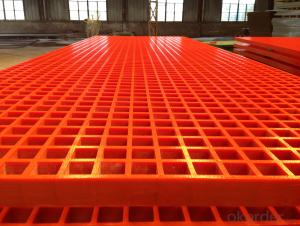FRP grating for pollution discharge construcation
- Loading Port:
- Tianjin
- Payment Terms:
- TT OR LC
- Min Order Qty:
- 1000 m²
- Supply Capability:
- 10000000 m²/month
OKorder Service Pledge
OKorder Financial Service
You Might Also Like
Specifications of FRP grating
- Meet ASTM E-84 AND ISO9001
- Anti-corrosion floor
- Anti-conductive
- Walkway,platform,trench cover,fence,stair treads
- Surface treatment
- Concave,grit,smooth,covered
- Many colors can be chose: Red,yellow,grey,blue and other RAL colors
Common product specifications:
L×W×H(mm×mm×mm) | Center Distance(mm×mm) | Tendons relief(mm) | Module(mm) |
1220×3660×38 | 38.1×38.1 | 7 | 38.5-41 |
1220×3660×30 | 38.1×38.1 | 7 | 30.5-32 |
1220×3660×25 | 38.1×38.1 | 6.8 | 25.5-27 |
1220×3660×50 | 50.7×50.7 | 7.5 | 50.5-52 |
1000×4038×38 | 38.1×38.1 | 7 | 38.5-41 |
1000×4038×25 | 38.1×38.1 | 6.8 | 25.5-27 |
Features of FRP Grating:
- Corrosion and Chemical resistant
- Slip-resistant
- High strength-to-weight ratio
- Ergonomic
- Low maintenance
- Fire retardant
- Easily fabricated and installed
Other positive features:
Electrically and thermally non-conductive
Ultra-violet resistant
Provided in a number of grating thickness and panel sizes with many types of mesh size
Offers bi-directional strength characteristic
Impact resistance
Electronically transparent
As FRP grating has so many excellent features,so now FRP grating are widely used in many fields.
Drilling platform,walkway,water treatment plant,car wash and so on.
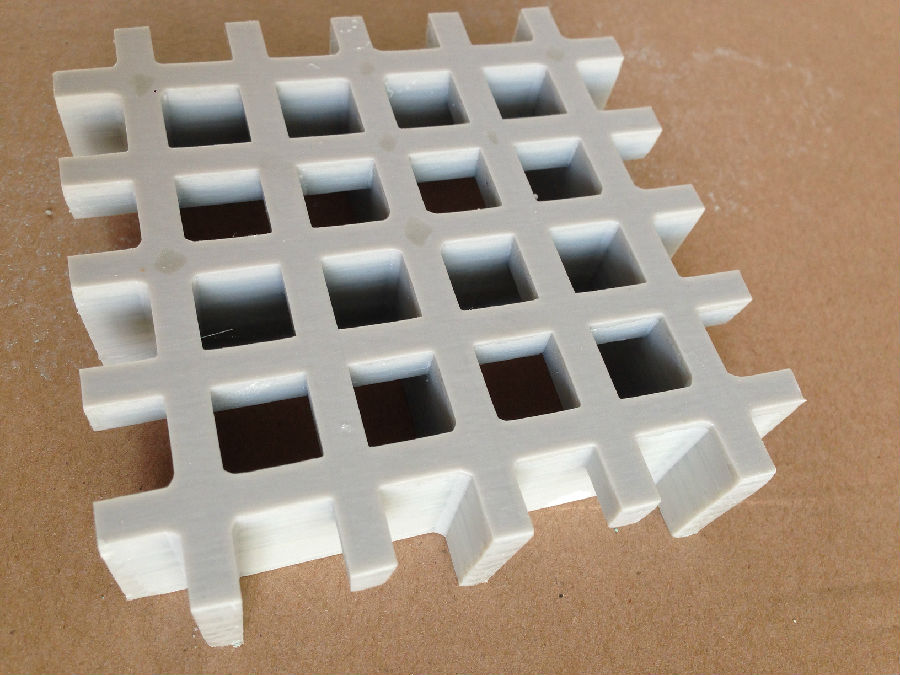

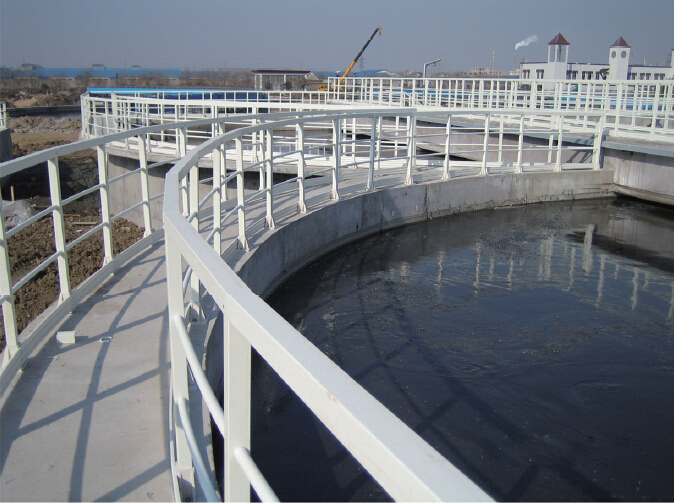
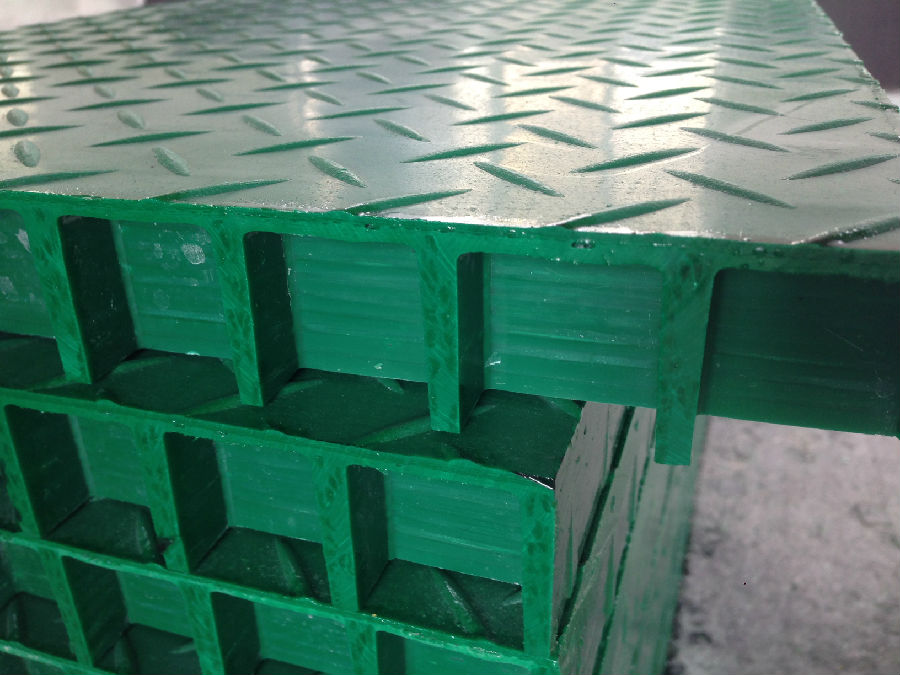

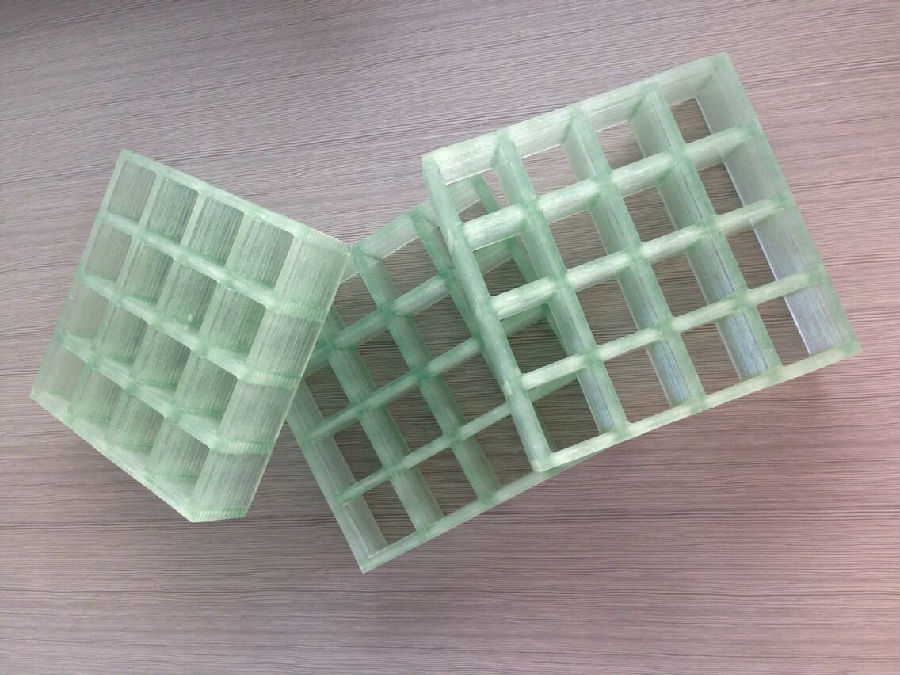
- Q:Are FRP pultrusion profiles resistant to chemicals used in chemical plants?
- Yes, FRP (Fiber Reinforced Polymer) pultrusion profiles are highly resistant to the chemicals typically used in chemical plants. The combination of reinforced fibers and a polymer matrix in FRP profiles provides excellent resistance to a wide range of corrosive substances, making them an ideal choice for chemical plant applications.
- Q:Are FRP pultrusion profiles resistant to chemicals used in pharmaceutical packaging?
- Yes, FRP (Fiber Reinforced Polymer) pultrusion profiles are generally resistant to chemicals used in pharmaceutical packaging. FRP pultrusion profiles are made of a combination of reinforced fibers and a polymer resin matrix, which provides them with excellent chemical resistance properties. The polymer resin used in FRP profiles is typically selected to be compatible with a wide range of chemicals, including those commonly used in pharmaceutical packaging. FRP profiles have been extensively used in various industries, including pharmaceuticals, due to their high chemical resistance. They are capable of withstanding exposure to a wide range of chemicals, such as acids, bases, solvents, and other aggressive substances commonly found in pharmaceutical packaging processes. This resistance helps protect the integrity of the packaging and ensures that there is no contamination or degradation of the pharmaceutical products. Additionally, FRP pultrusion profiles are also resistant to corrosion, which is another advantage in the pharmaceutical industry where aggressive chemicals may be present. This resistance to corrosion further enhances the durability and longevity of the FRP profiles, making them a reliable choice for pharmaceutical packaging applications. However, it is important to note that the specific chemical resistance of FRP pultrusion profiles may vary depending on the type and concentration of the chemicals being used. Therefore, it is recommended to consult the manufacturer or supplier of the FRP profiles to ensure their compatibility with the specific chemicals used in pharmaceutical packaging.
- Q:Are FRP pultrusion profiles resistant to high-pressure water jets?
- Yes, FRP (Fiber Reinforced Polymer) pultrusion profiles are generally resistant to high-pressure water jets. The inherent properties of FRP, such as its high strength-to-weight ratio, corrosion resistance, and durability, make it a suitable material for applications involving exposure to water and other harsh environments. The manufacturing process of pultrusion ensures that the fibers are thoroughly impregnated with resin, resulting in a homogeneous and highly dense composite material. This density provides FRP pultrusion profiles with a high resistance to water penetration, preventing the material from being damaged or compromised by high-pressure water jets. Furthermore, FRP pultrusion profiles are known for their excellent chemical resistance, which includes resistance to water. This characteristic ensures that the profiles will not degrade or deteriorate when exposed to high-pressure water jets over extended periods. It is worth noting that the specific resistance of FRP pultrusion profiles to high-pressure water jets may vary based on the specific resin and fiber combination used in their manufacturing. Therefore, it is recommended to consult the manufacturer or supplier for detailed information regarding the resistance of specific FRP pultrusion profiles to high-pressure water jets in a given application.
- Q:Can FRP pultrusion profiles be customized or tailored to specific project requirements?
- Yes, FRP (Fiber Reinforced Polymer) pultrusion profiles can be customized or tailored to specific project requirements. Pultrusion is a manufacturing process that allows for the creation of continuous fiber-reinforced composite profiles with a high level of design flexibility. The specific requirements of a project, such as dimensions, shapes, and mechanical properties, can be accommodated by adjusting the design and manufacturing parameters. The customization process begins with understanding the project's needs and specifications. This includes determining the desired profile dimensions, cross-sectional shape, and mechanical properties such as strength, stiffness, and durability. Based on these requirements, engineers and manufacturers can develop a tailored solution. The customization of FRP pultrusion profiles can be achieved through various means. Firstly, the choice of reinforcement materials, such as fiberglass, carbon fiber, or aramid fiber, can be selected based on the desired mechanical characteristics. The orientation and volume fraction of the fibers can also be adjusted to optimize the strength and stiffness of the profile. Additionally, the resin matrix used in the pultrusion process can be customized to enhance specific properties, such as fire resistance, chemical resistance, or UV resistance. Various resin systems, including polyester, vinyl ester, or epoxy, can be utilized to meet the project's requirements. Furthermore, the pultrusion process allows for the incorporation of additional features during manufacturing. This includes adding inserts, fastener holes, grooves, or other structural details to the profile. These modifications can be tailored to the specific project requirements, ensuring compatibility with the overall design and assembly. Overall, FRP pultrusion profiles offer a high degree of customization and tailoring to meet specific project requirements. This versatility makes them a popular choice in various industries, including construction, infrastructure, aerospace, and automotive, where lightweight, durable, and corrosion-resistant materials are needed.
- Q:Are FRP pultrusion profiles resistant to hydrocarbons?
- Yes, FRP (Fiber Reinforced Polymer) pultrusion profiles are generally resistant to hydrocarbons. The combination of various reinforcing fibers such as fiberglass or carbon fiber with a polymer matrix makes FRP materials highly resistant to chemical corrosion, including hydrocarbons. This resistance makes FRP pultrusion profiles a suitable choice for applications where exposure to hydrocarbons is expected, such as in oil and gas industry, chemical processing plants, or fuel storage facilities. However, it is important to note that the level of resistance can vary depending on the specific type of resin used in the FRP material and the concentration and temperature of the hydrocarbons involved. Therefore, it is recommended to consult with the manufacturer or supplier of the FRP pultrusion profiles to ensure their compatibility with the specific hydrocarbon environment in question.
- Q:Can FRP pultrusion profiles be used in the automotive industry?
- Yes, FRP pultrusion profiles can be used in the automotive industry. They offer several advantages such as high strength-to-weight ratio, corrosion resistance, and design flexibility. These profiles can be used for various automotive applications including body panels, structural components, and interior parts.
- Q:Can FRP pultrusion profiles be used in the construction of swimming pool enclosures?
- Swimming pool enclosures can make use of FRP pultrusion profiles, which are known for their excellent strength-to-weight ratio, corrosion resistance, and durability. This makes them an ideal choice for outdoor applications like swimming pool enclosures. To manufacture FRP pultrusion profiles, fiberglass rovings are pulled through a resin bath and then through a heated die. This results in a continuous profile of uniform shape and strength. This manufacturing process ensures that the profiles are strong, stiff, and lightweight, making them easy to handle and install. In the construction of swimming pool enclosures, FRP pultrusion profiles can be utilized for various structural elements such as beams, columns, trusses, and panels. These profiles provide the necessary strength and support, while also offering resistance to corrosion, moisture, and UV radiation, which are common challenges in a swimming pool environment. Furthermore, FRP pultrusion profiles can be customized to meet specific design requirements, allowing for flexibility in creating unique and aesthetically pleasing swimming pool enclosures. They can be fabricated in different shapes, sizes, and colors, enabling the desired architectural look and feel. Overall, FRP pultrusion profiles offer a reliable and long-lasting solution for constructing swimming pool enclosures. They provide the necessary strength, durability, and resistance to environmental factors. Additionally, their lightweight nature simplifies handling and installation, ultimately reducing construction time and costs.
- Q:Are FRP pultrusion profiles resistant to impact?
- Yes, FRP (Fiber Reinforced Polymer) pultrusion profiles are generally resistant to impact. The combination of the high-strength fibers and the polymer matrix used in the manufacturing process makes FRP profiles highly durable and able to withstand significant impacts without cracking or breaking. Additionally, the pultrusion process ensures that the fibers are uniformly distributed throughout the profile, further enhancing its impact resistance. This makes FRP pultrusion profiles ideal for applications where impact resistance is important, such as in construction, transportation, and infrastructure projects.
- Q:Are FRP pultrusion profiles fire resistant?
- FRP pultrusion profiles exhibit excellent fire resistance due to the combination of reinforcing fibers and the polymer matrix employed in their production. These profiles are crafted through the pultrusion process, wherein reinforcing fibers like fiberglass or carbon fiber are impregnated with a thermosetting resin. This resin undergoes a curing process, resulting in a robust and durable composite material. One of the primary advantages of FRP pultrusion profiles lies in their inherent fire resistance. The thermosetting resin utilized in their manufacture possesses properties that render it highly impervious to fire. When subjected to flames or elevated temperatures, the resin does not easily burn or melt, thereby impeding the propagation of fire. Moreover, the reinforcing fibers present in FRP profiles contribute significantly to their fire resistance. For example, fiberglass, being an inorganic substance, does not combust. It serves as a heat transfer barrier, aiding in the containment of flames. Additionally, FRP pultrusion profiles can be engineered to meet specific fire safety standards and regulations. By incorporating supplementary fire retardant additives or employing specialized resin systems, the fire resistance of these profiles can be further enhanced. It is crucial to note that although FRP pultrusion profiles do possess fire resistance, their precise fire rating may vary depending on the particular composition and design. Thus, it is imperative to consult manufacturers or suppliers who can furnish comprehensive information regarding the fire resistance properties of their FRP pultrusion profiles.
- Q:Are FRP pultrusion profiles fire resistant?
- Yes, FRP pultrusion profiles are fire resistant.
1. Manufacturer Overview |
|
|---|---|
| Location | |
| Year Established | |
| Annual Output Value | |
| Main Markets | |
| Company Certifications | |
2. Manufacturer Certificates |
|
|---|---|
| a) Certification Name | |
| Range | |
| Reference | |
| Validity Period | |
3. Manufacturer Capability |
|
|---|---|
| a)Trade Capacity | |
| Nearest Port | |
| Export Percentage | |
| No.of Employees in Trade Department | |
| Language Spoken: | |
| b)Factory Information | |
| Factory Size: | |
| No. of Production Lines | |
| Contract Manufacturing | |
| Product Price Range | |
Send your message to us
FRP grating for pollution discharge construcation
- Loading Port:
- Tianjin
- Payment Terms:
- TT OR LC
- Min Order Qty:
- 1000 m²
- Supply Capability:
- 10000000 m²/month
OKorder Service Pledge
OKorder Financial Service
Similar products
New products
Hot products
Related keywords
